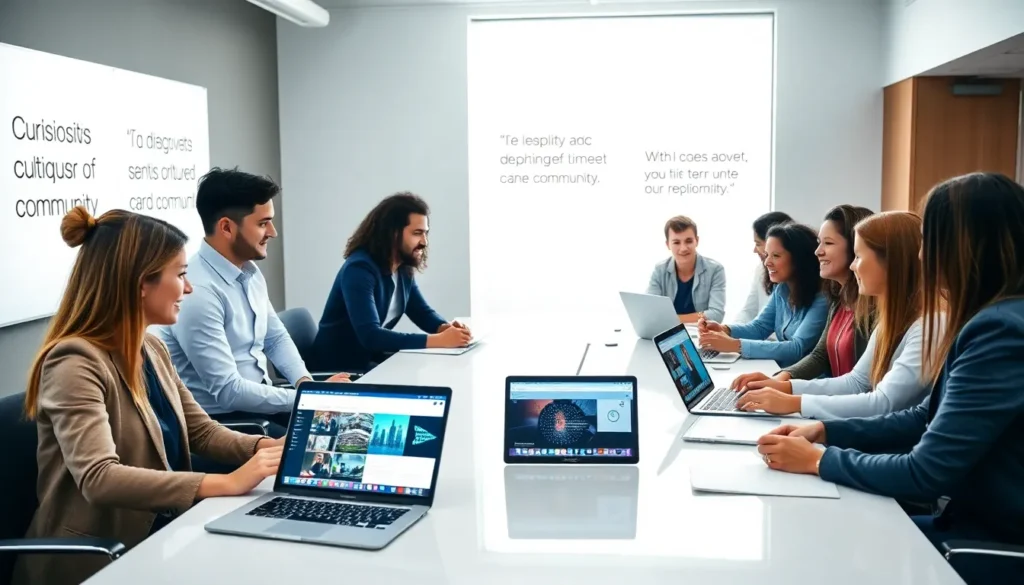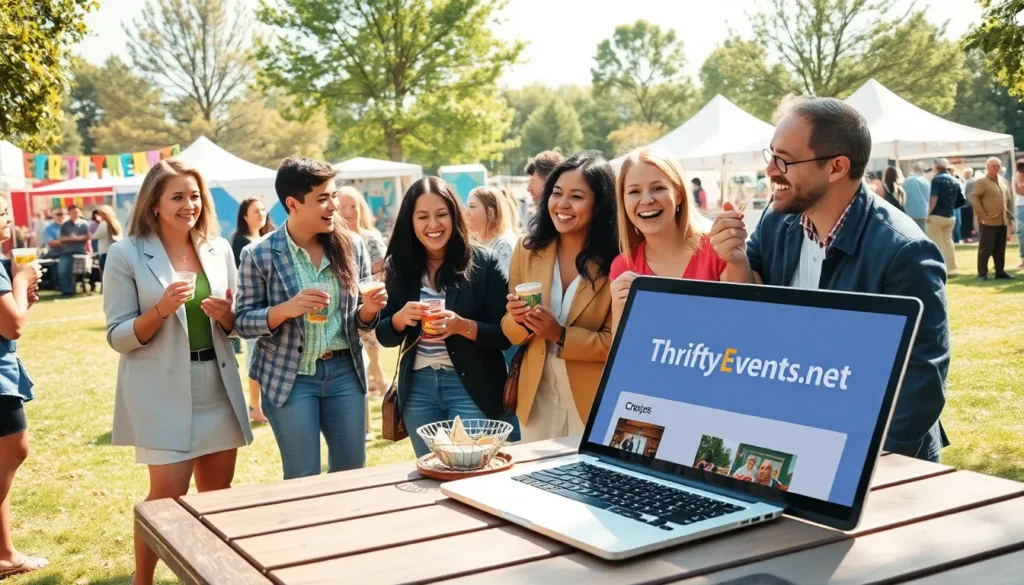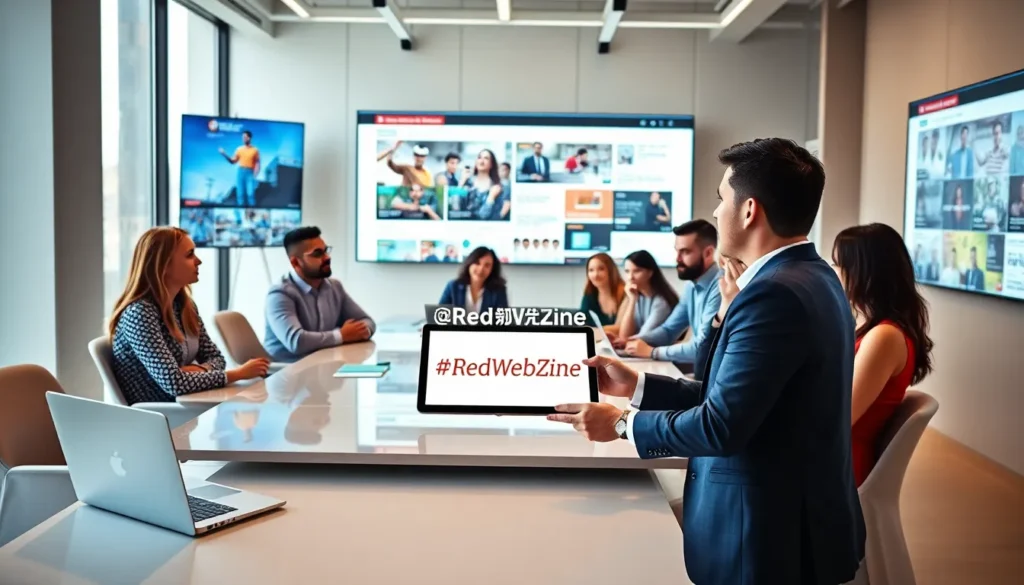Have you heard about the #Redwebzine movement? It’s more than just a hashtag, it’s an online phenomenon stirring conversation across digital platforms. Picture this: a vibrant community of creators and thinkers, sharing insights and ideas that challenge the status quo. Sounds intriguing, right? And while that might lead you to expect a sea of serious discussions, wait until you find out how this movement shakes things up with a good dose of humor. Let’s dive deep into the world of #Redwebzine, where exploration and community go hand in hand.
Table of Contents
ToggleUnderstanding the Redwebzine Movement

At its core, the #Redwebzine movement represents a gathering point for digital creatives. It breaks the mold of traditional media by prioritizing an open dialogue among diverse voices. Unlike archaic platforms focused on polished articles, this space embraces authenticity, allowing contributors to speak freely and connect with their audience directly. Each post is a brushstroke on the expansive canvas of digital culture, adding depth and color to conversations that matter.
The power of community is a cornerstone of this movement. Whether it’s a witty meme or a thought-provoking essay, everything shared helps to foster connections among users. This interconnectedness eventually breeds not only interaction but also a sense of belonging, making readers feel part of something larger than themselves.
By engaging with the #Redwebzine hashtag, one doesn’t just consume content, they become part of a collective narrative that celebrates creativity, freedom of expression, and authenticity.
Origins and Evolution of Redwebzine
#Redwebzine didn’t pop up overnight: rather, it evolved from a variety of influences in digital media. Originating in the early 2020s, the movement’s roots can be traced back to several factors: the increasing desire for authenticity, the rise of citizen journalism, and the frustration with mainstream media. It grew from individuals seeking out platforms that resonated with their personal experiences and storytelling styles.
As the movement gained traction, it quickly attracted an eclectic mix of contributors. Writers, artists, and netizens flocked to share unique perspectives on societal issues, pop culture, and everything in between. Over time, #Redwebzine established itself as a haven for marginalized voices, allowing individuals who felt stifled by traditional media channels to express themselves freely.
The progression from initial discussions to the robust community we see today showcases how digital platforms enable grassroots movements. With each share, retweet, or like, #Redwebzine continues to morph, adapting to the ever-changing landscape of online communication.
Key Themes and Topics Covered
The breadth of topics covered under the #Redwebzine umbrella is staggering. Contributors explore everything from social justice issues to innovative technology, and each post often introduces a healthy dose of humor. Here are a few key themes that dominate the conversation:
Social Justice
One of the most critical aspects of #Redwebzine is its commitment to social justice. Articles investigate into pressing issues, raising awareness about inequality, gender rights, and more. Contributors do not shy away from difficult subjects: rather, they tackle them head-on with honesty and insight.
Pop Culture Commentary
Pop culture is also a big player in the #Redwebzine dialogue. Think of satirical takes on the latest trends, critiques of blockbuster films, or discussions about the influence of social media on youth culture. This topic often serves as a light-hearted bridge to heavier issues.
Advocacy for Diversity
Diversity isn’t just a buzzword here, it’s a commandment. Contributors actively discuss the importance of representation in media, arts, and culture, driving home the idea that everyone’s voice matters, particularly those underrepresented in mainstream avenues.
Engagement and Community Building
Engagement is where the magic of #Redwebzine truly happens. It’s not merely about passive consumption: it’s about creating spaces for dialogue. Whether in the comments sections of blog posts or threads on social media, users are invited to engage boldly. This kind of participation empowers audiences to share personal stories, reflections, and counterpoints to various topics.
Also, community building goes beyond just conversation. Many contributors host live Q&A sessions, workshops, and even collaborative projects that spark creativity and amplify different voices. Local meet-ups and online events further strengthen these bonds, seamlessly blending the digital and physical realms.
The dynamism of #Redwebzine fosters a sense of camaraderie that motivates individuals to support each other’s work. As this community continues to grow, it nurtures both emerging talents and seasoned voices, ensuring a fresh and engaging environment for all.
Impact on Digital Media and Culture
The impact of #Redwebzine on the landscape of digital media is both profound and inspiring. By prioritizing genuine dialogue over rigid structures, it challenges conventional norms in journalism and content creation. The movement illustrates the power of decentralized platforms in altering how information is shared and digested.
This shift has also prompted traditional media outlets to reassess their methodologies. With traditional journalistic practices often criticized for being biased or slow to adapt, #Redwebzine has set a new standard that emphasizes speed, relatability, and inclusivity. As a result, established media companies are beginning to incorporate user-generated content and diverse perspectives to remain relevant in today’s fast-paced environment.
The cultural implications are equally significant. #Redwebzine encourages authenticity and vulnerability, urging people to share their stories without the fear of backlash. This movement creates a ripple effect, as individuals outside this sphere begin to adopt similar practices in their own content creation.
Future Directions for Redwebzine
Looking ahead, the future of #Redwebzine appears bright, fueled by the passion of its community members. As technology continues to evolve, so too will the platforms that help this movement. Increased accessibility means that even more voices will join the conversation, potentially leading to a richer tapestry of ideas and experiences.
Also, there’s a growing emphasis on multimedia storytelling. Expect to see an influx of podcasts, videos, and interactive content that enhances the #Redwebzine experience. This evolution will not only appeal to varied audiences but also expand its influence beyond text-based formats.
Collaboration may also increase broadly, with people across regions and backgrounds coming together to tackle global issues. As they harmonize their efforts, the #Redwebzine movement will likely spur new initiatives, campaigns, and partnerships that further amplify its mission.









